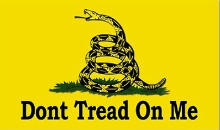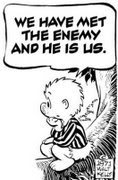Abolish The Federal Reserve Act of 1913
December 23rd, 2010 . by TexasFredAbolish The Federal Reserve Act of 1913 Petition
To: U.S. Congress
This petition calls for the abolishment, by Congress of The Federal Reserve Act of 1913. To return all the rights and profits, from the creation of money to the rightful heirs, the citizens and the U.S. Government. It is outrageous that private banks and the FED can create our money and collect interest on it. If we must pay interest on monies created and loaned, let it be the United States of America that receives it, not some private interest.
We have lost our freedom to the private banks that create money out of thin air and enslave the common man to a life of debt. If we are to be indebted let it be to our country and not the bankers.
“The States should be applied to, to transfer the right of issuing circulating paper to Congress exclusively, in perpetuum.” -Thomas Jefferson to John W. Eppes, 1813. ME 13:276
“[The] Bank of the United States… is one of the most deadly hostility existing, against the principles and form of our Constitution… An institution like this, penetrating by its branches every part of the Union, acting by command and in phalanx, may, in a critical moment, upset the government. I deem no government safe which is under the vassalage of any self-constituted authorities, or any other authority than that of the nation, or its regular functionaries. What an obstruction could not this bank of the United States, with all its branch banks, be in time of war! It might dictate to us the peace we should accept, or withdraw its aids. Ought we then to give further growth to an institution so powerful, so hostile?” -Thomas Jefferson to Albert Gallatin, 1803. ME 10:437
Following by Greg Hobbs
What Is The Federal Reserve Bank?What is the Federal Reserve Bank (FED) and why do we have it?
The FED is a central bank. Central banks are supposed to implement a country’s fiscal policies. They monitor commercial banks to ensure that they maintain sufficient assets, like cash, so as to remain solvent and stable. Central banks also do business, such as currency exchanges and gold transactions, with other central banks. In theory, a central bank should be good for a country, and they might be if it wasn’t for the fact that they are not owned or controlled by the government of the country they are serving. Private central banks, including our FED, operate not in the interest of the public good but for profit.
There have been three central banks in our nation’s history. The first two, while deceptive and fraudulent, pale in comparison to the scope and size of the fraud being perpetrated by our current FED. What they all have in common is an insidious practice known as “fractional banking.”
Fractional banking or fractional lending is the ability to create money from nothing, lend it to the government or someone else and charge interest to boot. The practice evolved before banks existed. Goldsmiths rented out space in their vaults to individuals and merchants for storage of their gold or silver. The goldsmiths gave these “depositors” a certificate that showed the amount of gold stored. These certificates were then used to conduct business.
In time the goldsmiths noticed that the gold in their vaults was rarely withdrawn. Small amounts would move in and out but the large majority never moved. Sensing a profit opportunity, the goldsmiths issued double receipts for the gold, in effect creating money (certificates) from nothing and then lending those certificates (creating debt) to depositors and charging them interest as well.
Since the certificates represented more gold than actually existed, the certificates were “fractionally” backed by gold. Eventually some of these vault operations were transformed into banks and the practice of fractional banking continued.
Keep that fractional banking concept in mind as we examine our first central bank, the First Bank of the United States (BUS). It was created, after bitter dissent in the Congress, in 1791 and chartered for 20 years. A scam not unlike the current FED, the BUS used its control of the currency to defraud the public and establish a legal form of usury.
This bank practiced fractional lending at a 10:1 rate, ten dollars of loans for each dollar they had on deposit. This misuse and abuse of their public charter continued for the entire 20 years of their existence. Public outrage over these abuses was such that the charter was not renewed and the bank ceased to exist in 1811.
The war of 1812 left the country in economic chaos, seen by bankers as another opportunity for easy profits. They influenced Congress to charter the second central bank, the Second Bank of the United States (SBUS), in 1816.
The SBUS was more expansive than the BUS. The SBUS sold franchises and literally doubled the number of banks in a short period of time. The country began to boom and move westward, which required money. Using fractional lending at the 10:1 rate, the central bank and their franchisees created the debt/money for the expansion.
Things boomed for a while, then the banks decided to shut off the debt/money, citing the need to control inflation. This action on the part of the SBUS caused bankruptcies and foreclosures. The banks then took control of the assets that were used as security against the loans.
Closely examine how the SBUS engineered this cycle of prosperity and depression. The central bank caused inflation by creating debt/money for loans and credit and making these funds readily available. The economy boomed. Then they used the inflation which they created as an excuse to shut off the loans/credit/money.
The resulting shortage of cash caused the economy to falter or slow dramatically and large numbers of business and personal bankruptcies resulted. The central bank then seized the assets used as security for the loans. The wealth created by the borrowers during the boom was then transferred to the central bank during the bust. And you always wondered how the big guys ended up with all the marbles.







